Salmon, marinated in a blend of creole mustard, cilantro, honey, lemon, and spice, perfectly baked then topped with a creamy garlic butter sauce. You’ll know in your first bite that Sweet Daddy D’s Baked Salmon with Cilantro Creole Mustard Cream Sauce is a perfect blend of sweet and savory with hints of the Caribbean influence in Creole cuisine.
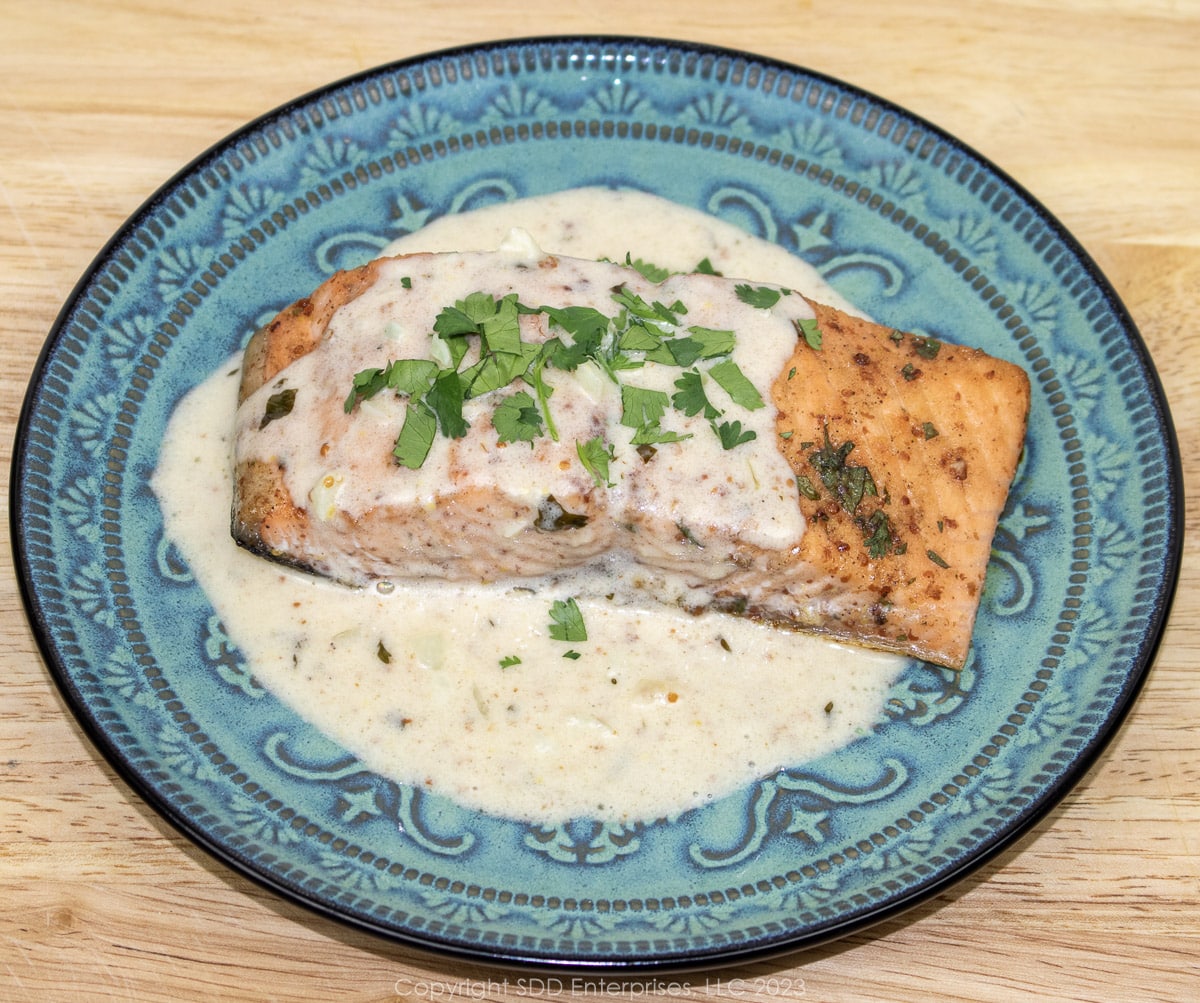
This post is not sponsored, but you will find affiliate links on this page. As an Amazon Associate, I earn from qualifying purchases. The price you pay as a consumer does not change, but I may make a small commission based on your purchase.
Jump to:
What Makes this Recipe So Good?
Creole cuisine, by definition, is always in a state of evolution. Recognized for its sauces, Creole cooking combines elements of various cuisines, available ingredients, and classic French techniques. This recipe is no exception, embracing Caribbean influences with classic French techniques. The marinade blends all-spice, nutmeg, fresh cilantro, garlic, and lemon, balanced with the sweetness of honey and a creamy Creole Mustard. Some of this marinade is then used in a cream sauce made with lemon, butter, and garlic. Take a simple Baked Salmon that's been marinaded with these flavors and covered in this sauce and you have a crazy delicious meal with a special Creole vibe.
Here’s What You Need
Here are some of the key ingredients for this recipe:
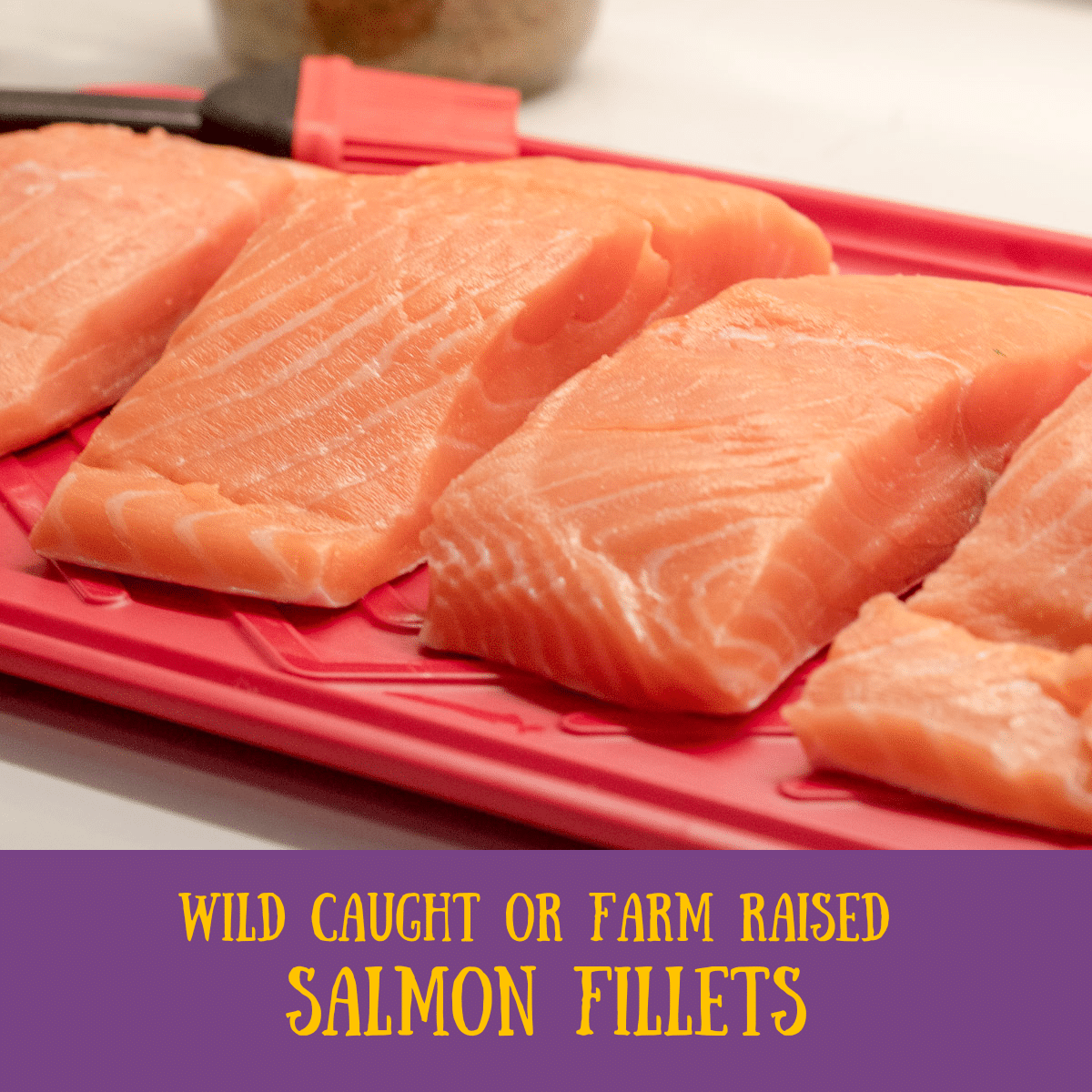
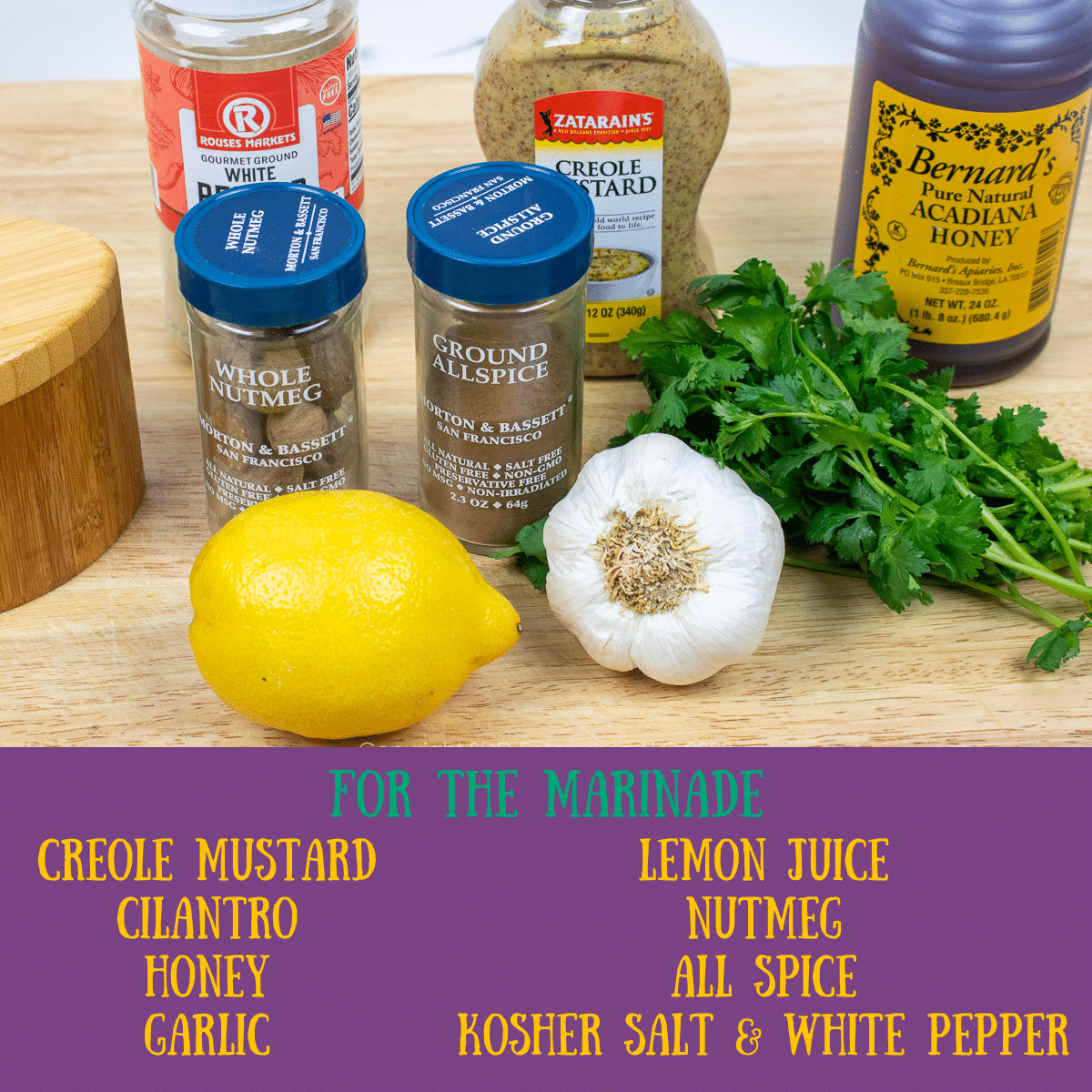
Note on Cilantro: Some folks don't like Cilantro, so substitute other fresh herbs: parsley, basil, dill, tarragon, or even curry powder.
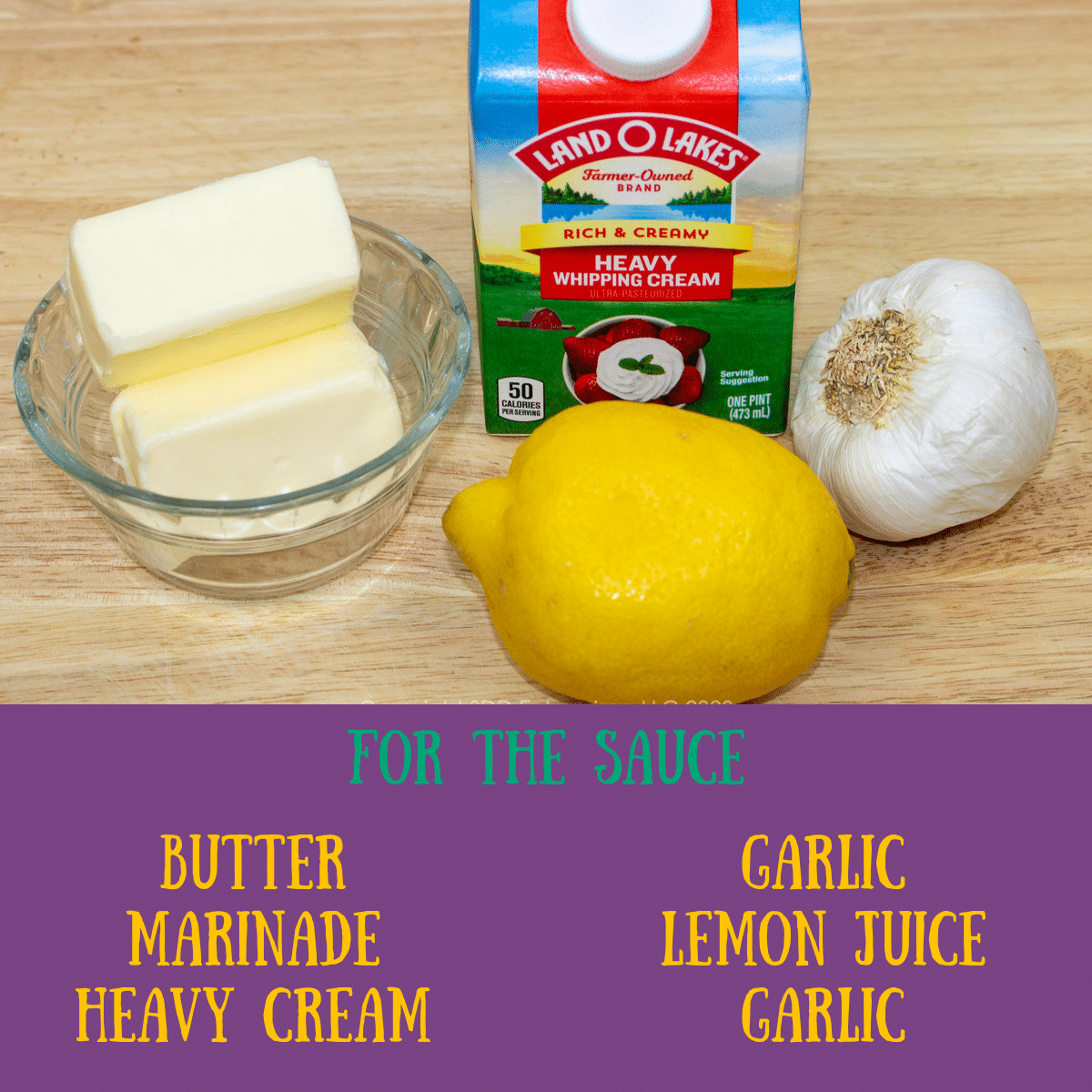
Equipment
Here is some of the equipment I used in making this recipe:
This post is not sponsored, but you will find affiliate links on this page. As an Amazon Associate, I earn from qualifying purchases. The price you pay as a consumer does not change, but I may make a small commission based on your purchase.
Here’s What You Do
First…you have a beer. All recipes are simpler if you prepare the ingredients before you start cooking. That's almost as important as preparing yourself before you start preparing the ingredients. To get in the right frame of mind, enjoy a beer while you read the recipe all the way through. Do you have everything you need and do you know what to do with everything? Then you're ready to perform your mise en place!
Mise en Place
- For the Salmon:
- Rinse the Salmon pieces and pat dry with a paper towel.
- Inspect the Salmon for bones and remove them if found.
- Slice the Salmon into 4 equal size serving-size pieces (about 6 ounces)
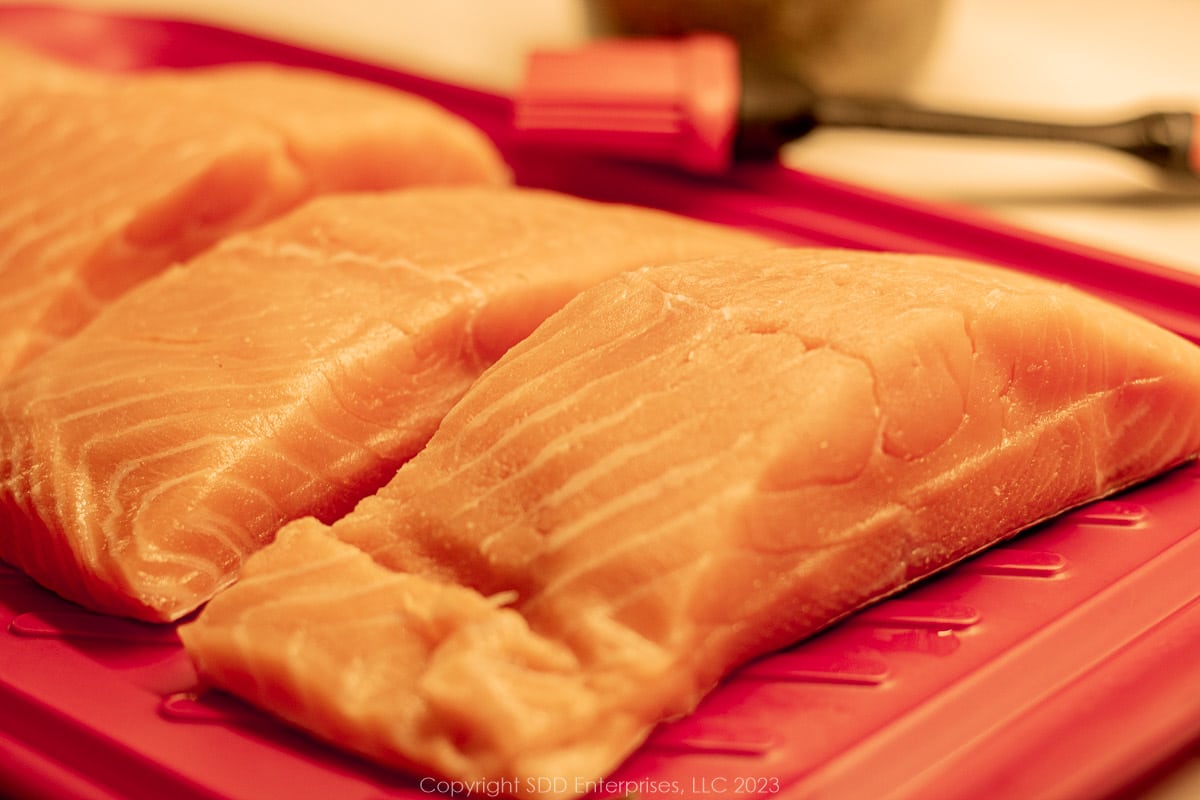
- For the Marinade:
- Chop the cilantro and garlic.
- Juice the lemon (juice enough lemon juice for the sauce also).
- Measure the remaining ingredients.
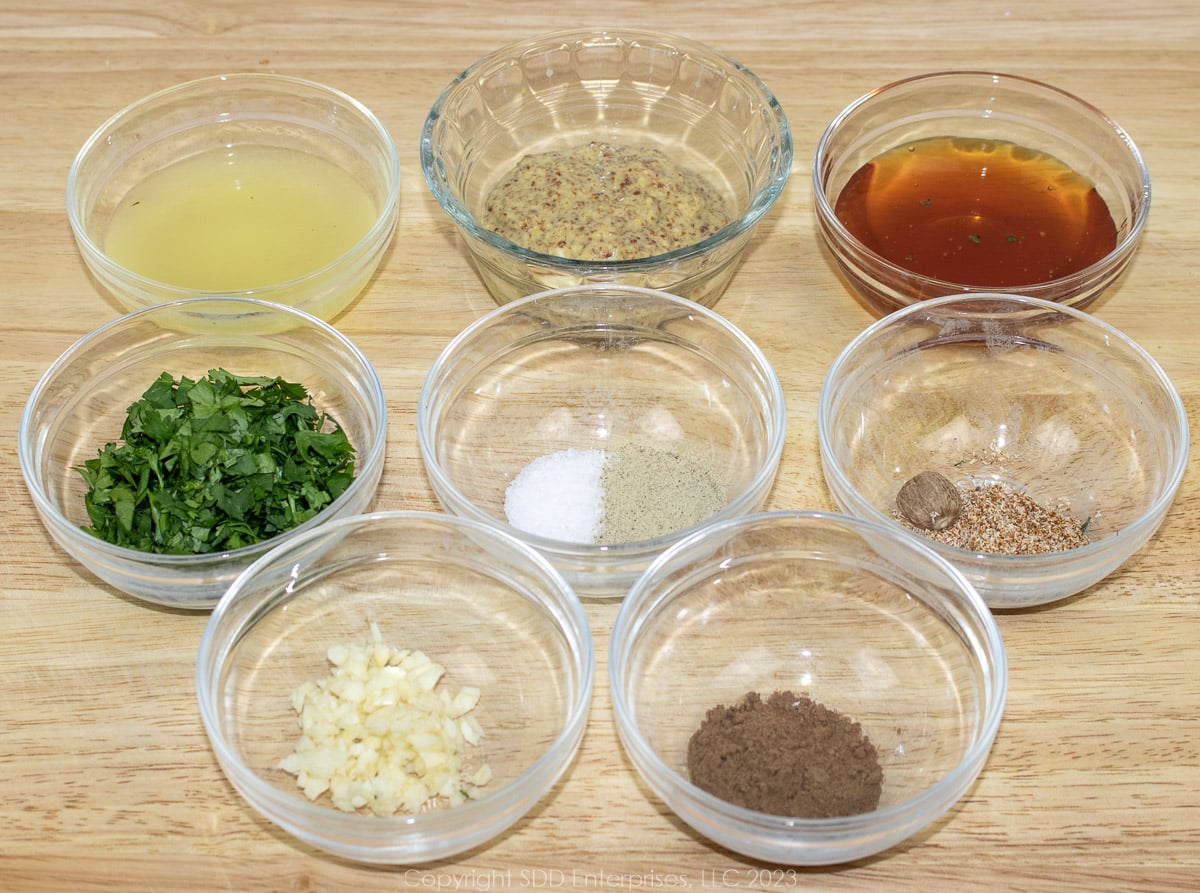
If you want a printable recipe for just the marinade, here it is!
- For the Sauce:
- Divide the butter.
- Once the marinade is made, reserve a portion (¼ cup).
- Measure the remaining ingredients.
- Place all ingredients in small prep dishes.
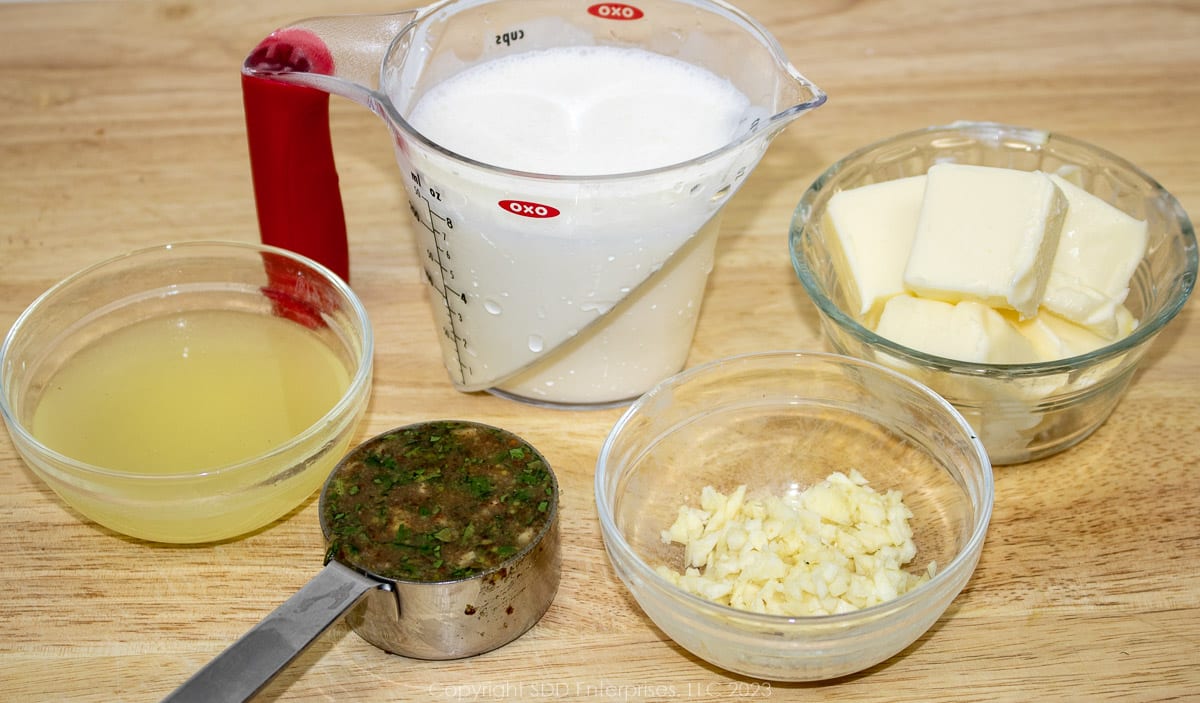
- Prepare a baking dish for the Salmon by rubbing the inside with a very thin layer of oil or butter.
- Place a 12-inch saute pan or saucier on the stove for preparing the sauce.
- Preheat the oven to 425 degrees Fahrenheit
Marinate the Salmon
What happens in this step? We start by infusing unique flavors into the fish.
Combine all marinade ingredients in a large bowl.
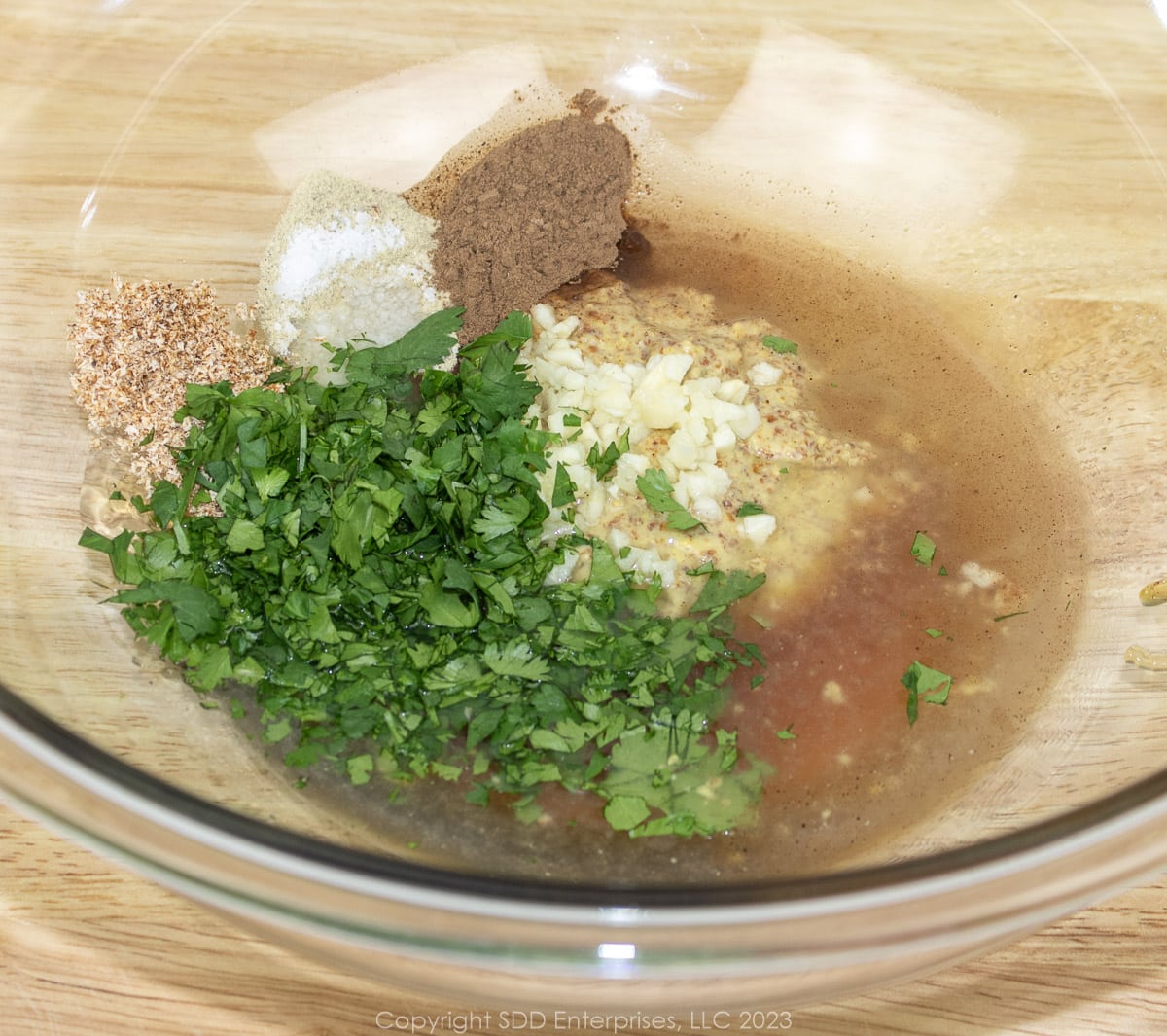
Place the Salmon Fillets in the bowl and coat all sides with the Marinade. Leave the Salmon skin side up.
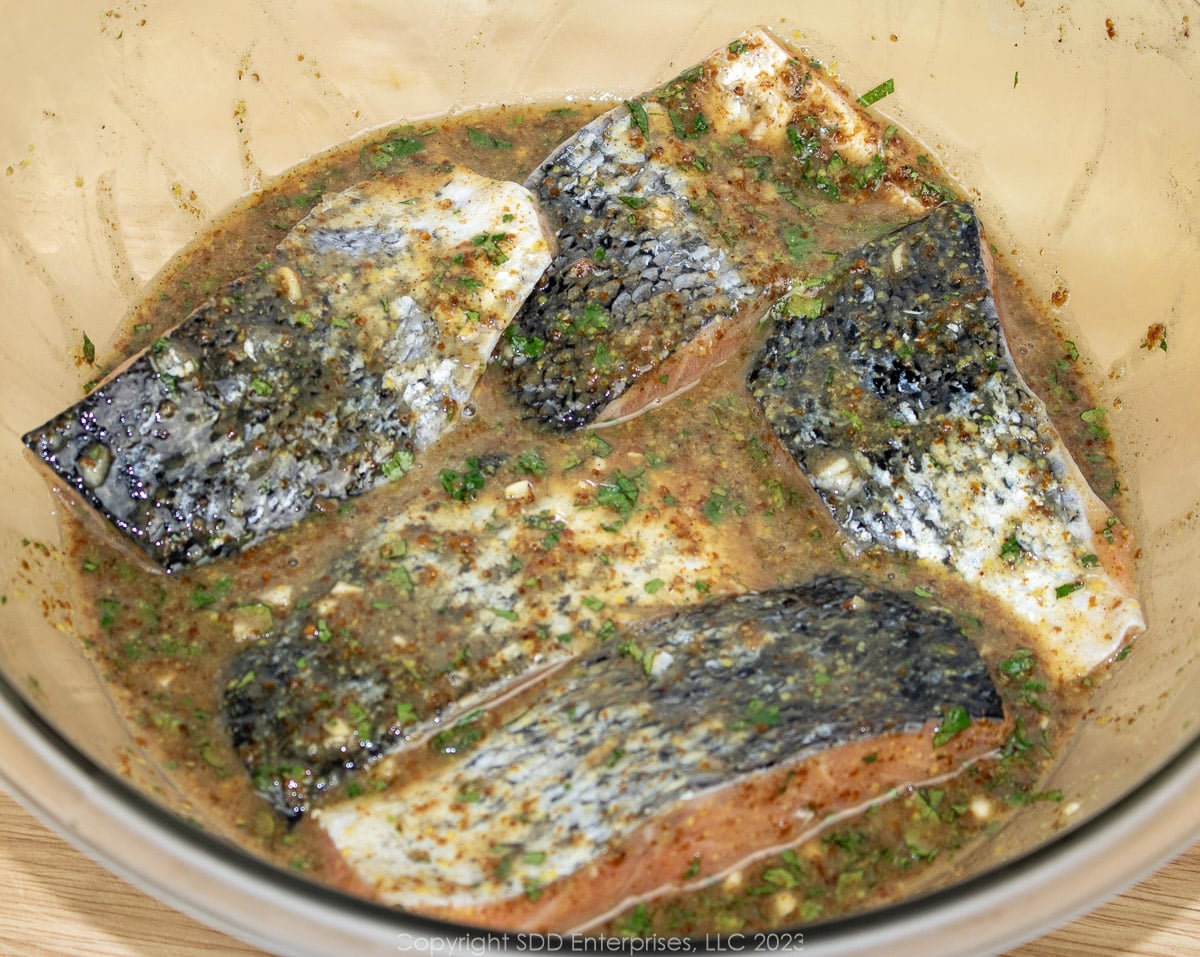
Cover the bowl with plastic wrap and place in the refrigerator for about 30 minutes.
Pro Tip: Don't marinate the Salmon for more than 30 minutes or the acid in the marinade will begin to "cook" the Salmon.
Bake the Salmon
What happens in this step? Baking the fish at high heat quickly seals in the flavor and creates a nice surface on the Salmon.
Wipe the excess marinade from the Salmon fillets and place them, skin side down, on an oven-safe baking dish and place in a 425-degree Fahrenheit preheated oven.
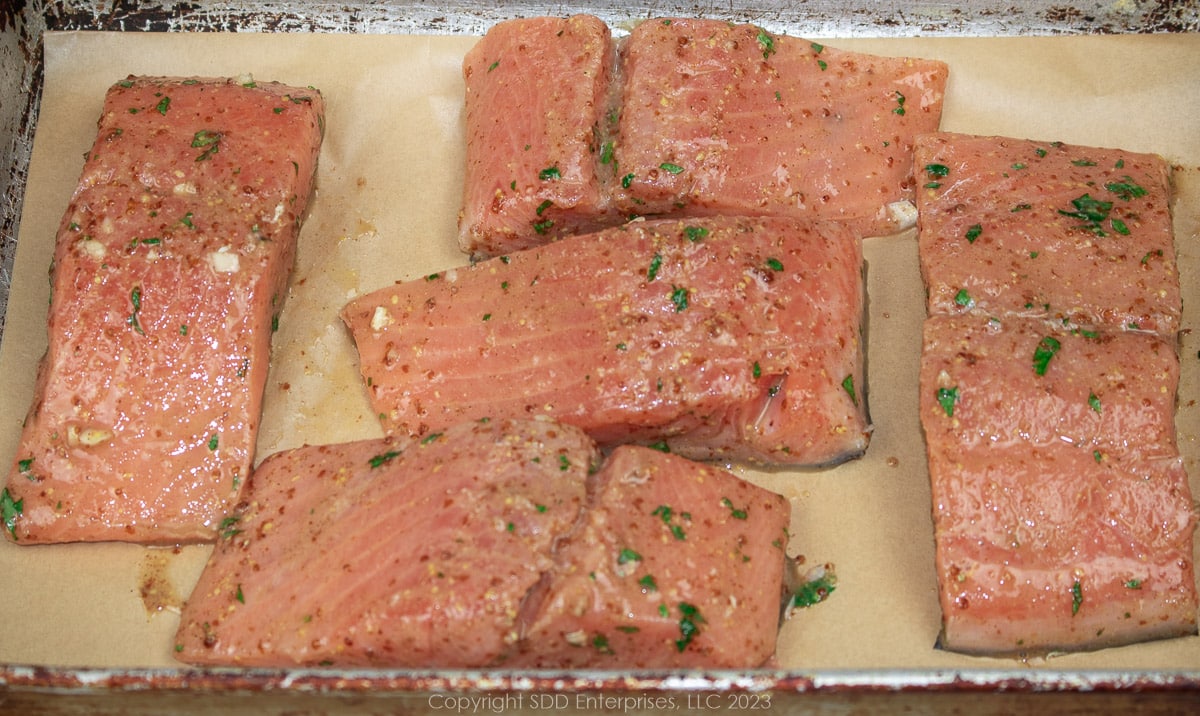
Note: If you haven’t reserved ¼ cup of the marinade, do that before discarding it.
Pro Tip: You don't need to “clean” the marinade off the fish. Simply brush off the excess marinade to eliminate any build-up of marinade that may burn in the oven.
Bake the fish for about 20 minutes (for medium; or until the internal temperature reaches 135 degrees Fahrenheit or your desired level of doneness. (See the Hints and Tips (FAQs) for more on cooking time).
Remove the fillets from the oven and allow them to rest for about 10 minutes while you make the sauce
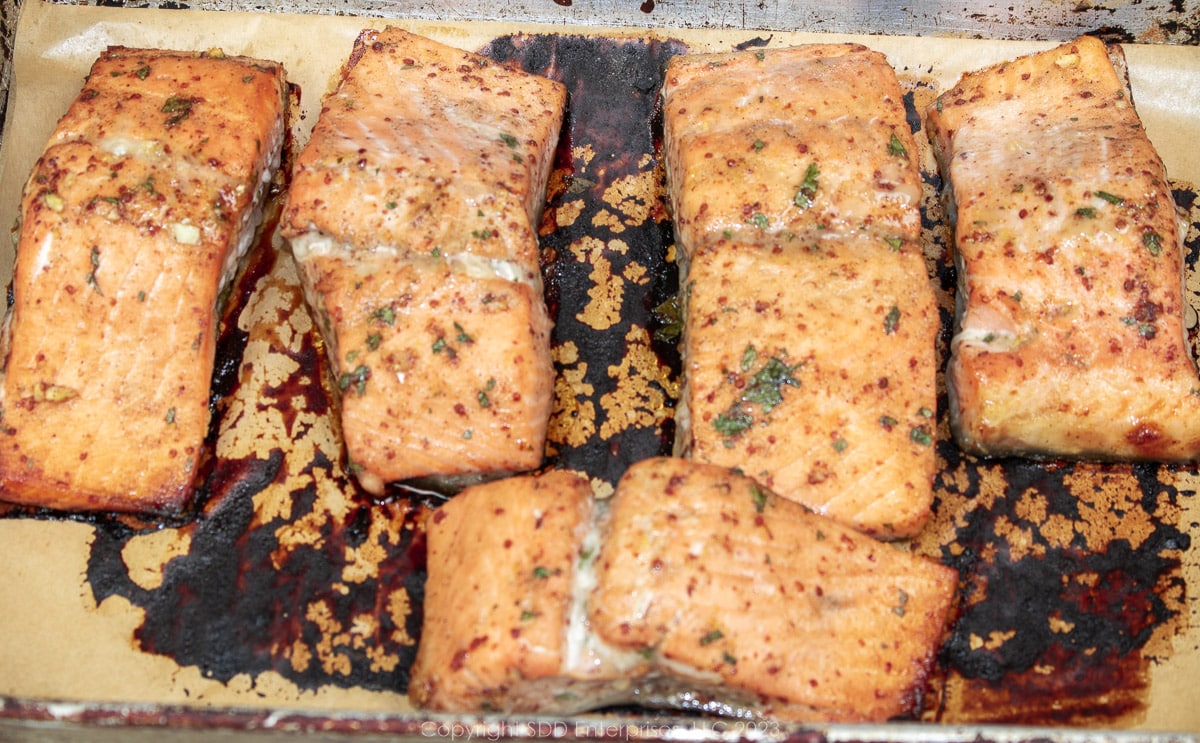
Prepare the Sauce
What happens in this step? Talk about sealing the deal, this simple sauce completes the flavor profile that separates this recipe from all other Salmon recipes. Finishing the sauce with some butter creates a silky smooth sauce.
While the fillets are resting, melt 6 tablespoons of butter in a non-stick saute pan of saucier. Whisk about ¼ cup of the reserved marinade and the lemon juice into the melted butter.
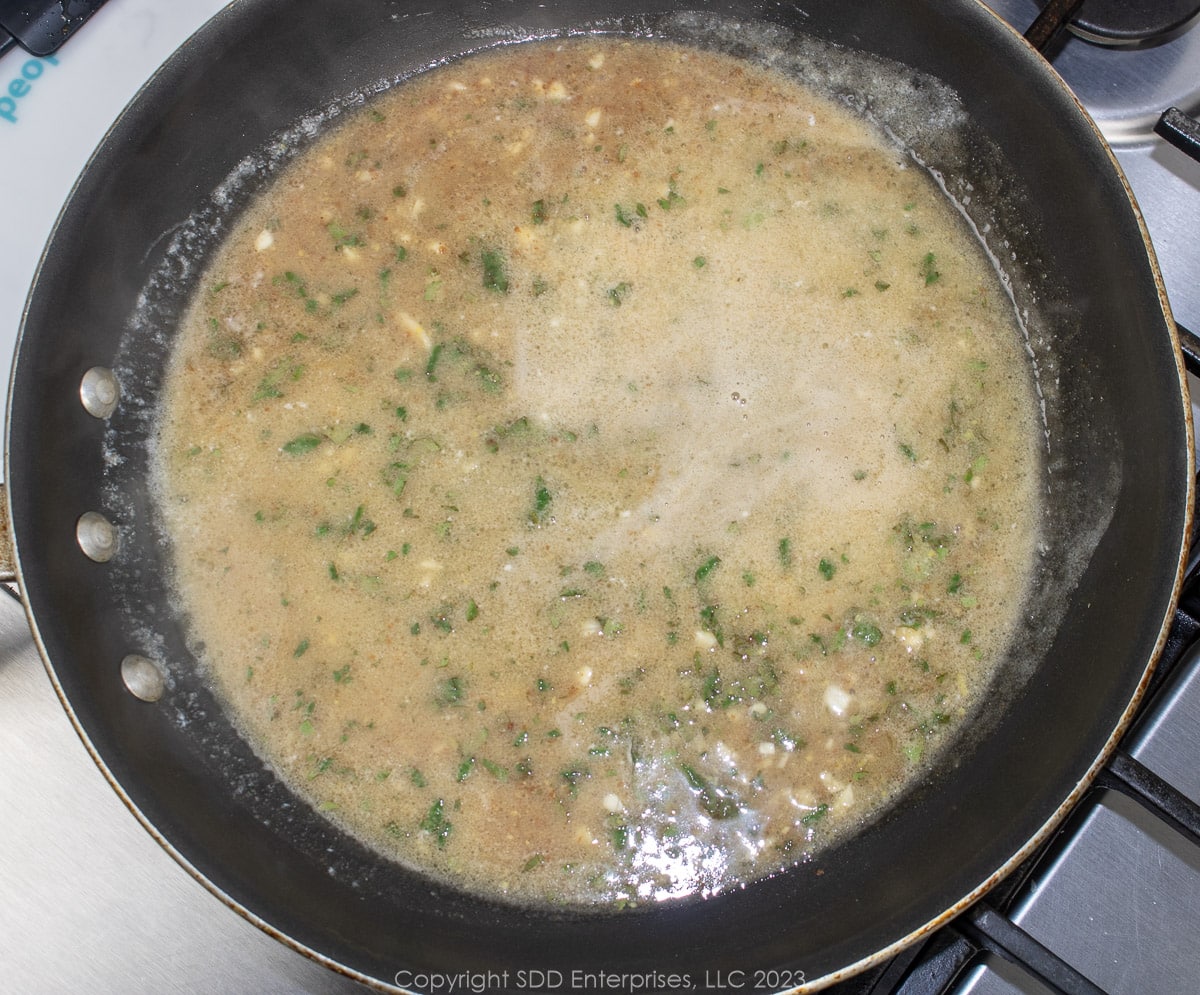
Once the mixture begins to simmer, add the garlic and heavy cream. Mix well to combine all the ingredients until creamy.
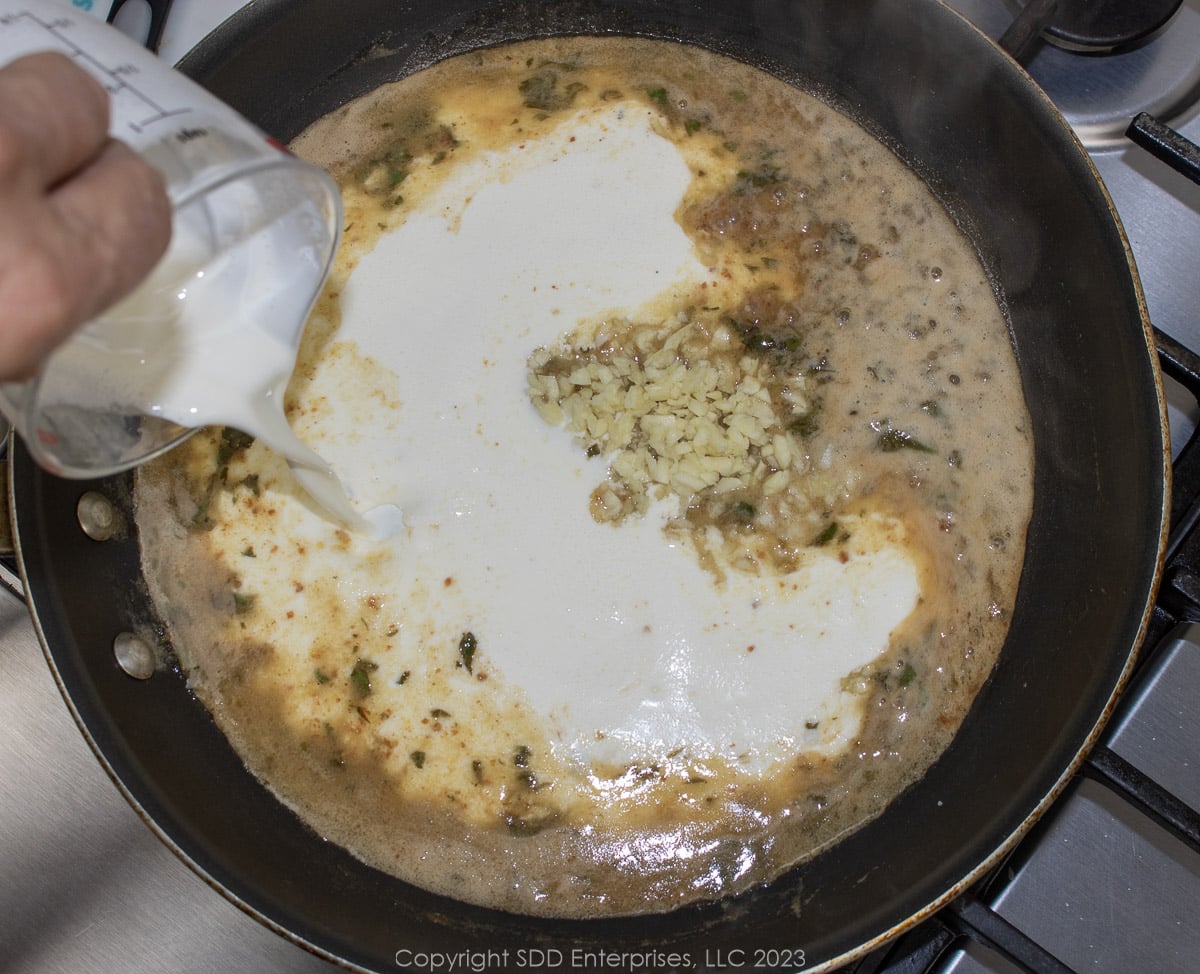
Return the sauce to a simmer for about 5 minutes, whisking or stirring constantly until the sauce starts to thicken.
Remove the pan from the heat and add the remaining 2 tablespoons of butter. Stir or whisk constantly until the butter has melted.
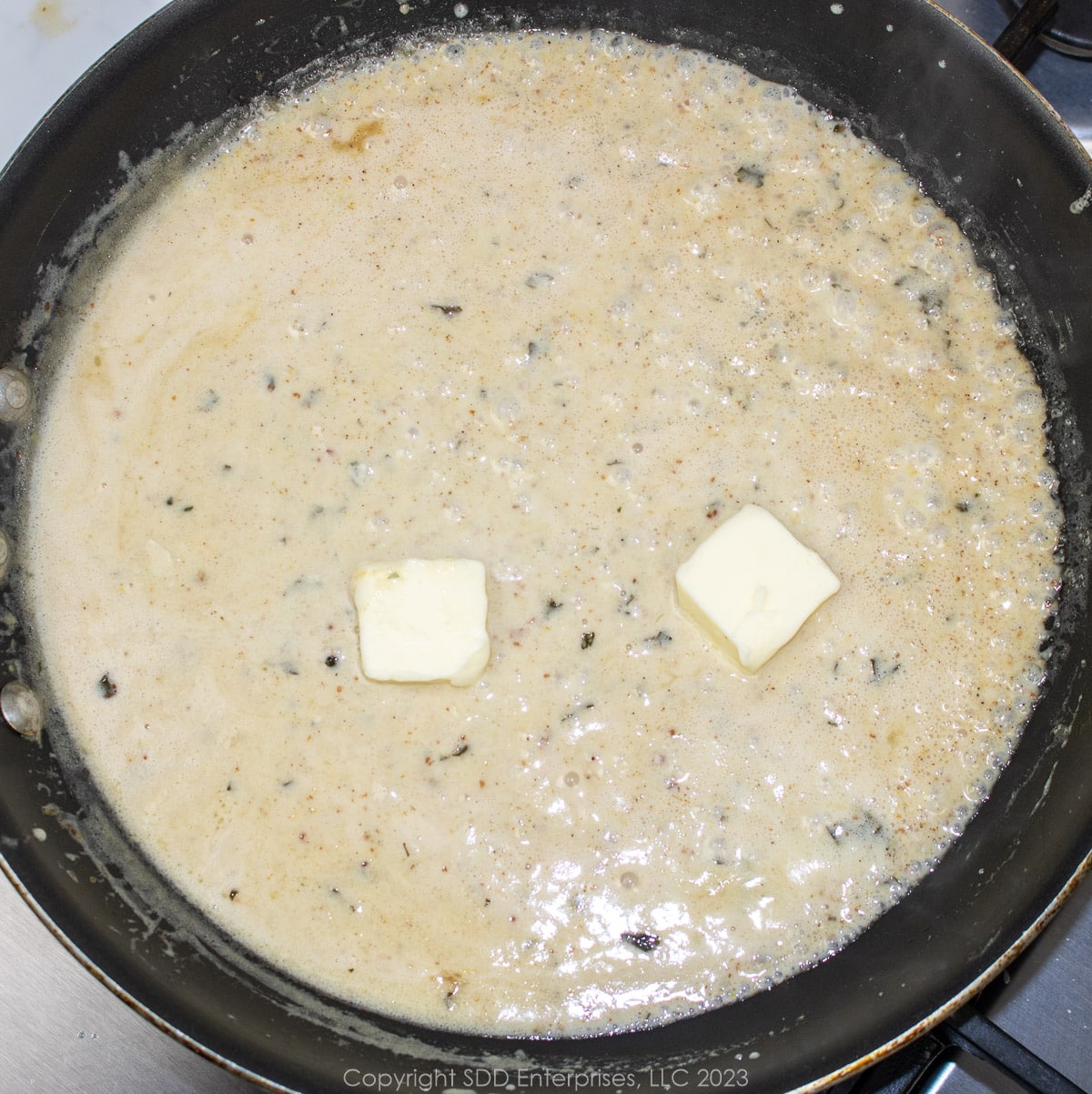
Note on the sauce: The sauce will thicken slightly while it simmers but it is not a "thick" sauce. When the sauce coats the back of the spoon, it is ready. Finishing the sauce with some butter creates a very nice silky smoothness. Taking the pan off the heat when adding in the butter will help stop the butter from separating.
Place each fillet on a serving dish and ladle sauce over each. Garnish with chopped cilantro and serve.
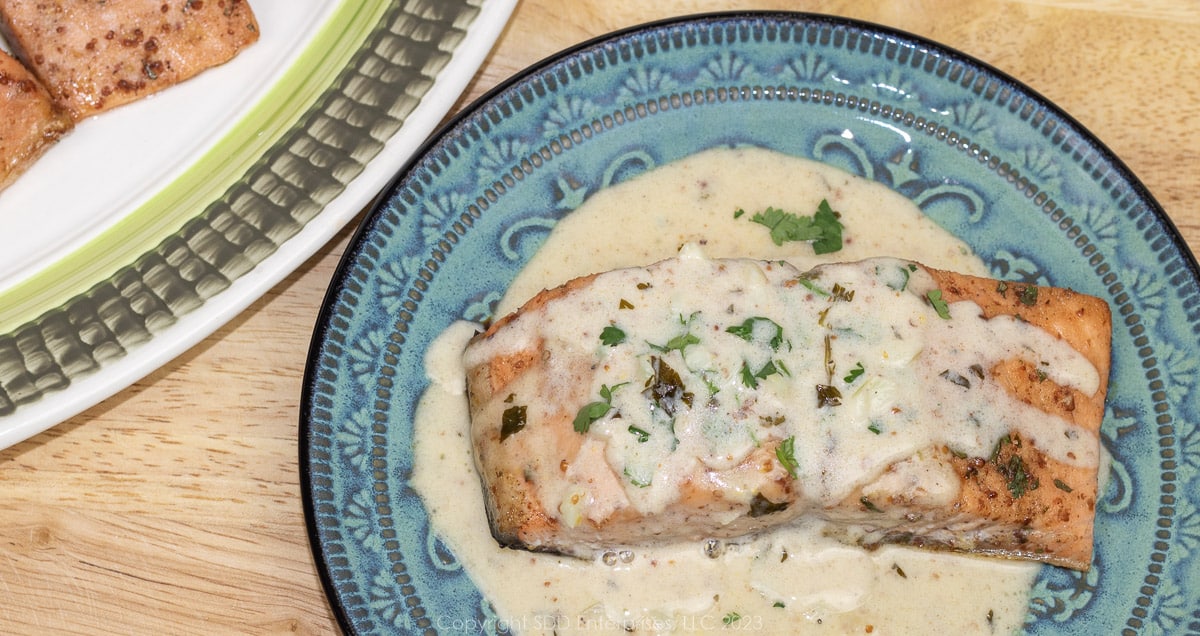
Alternate Cooking Methods
I think baking the Salmon is the simplest cooking method to use for this recipe, you can also pan-fry or grill the Salmon.
Pan Fry
Place a non-stick saute pan over medium-high heat (about 375 degrees Fahrenheit). Add a little olive oil or clarified butter. Place Salmon fillets skin side down and cook, without disturbing for about 4 minutes. Flip and continue cooking for about 4 or so minutes until the fish is firm but has a little bounce to it.
Pro Tip: If the Salmon sticks to the pan when you try to turn it, it isn't ready to flip. Leave it for another 30 seconds or so. When it is ready, it will release from the pan easily.
Grilling
Prepare a grill for high heat (425 degrees) with a chunk of cherry or Adler wood, or another flavor of wood you like. Pecan may be a nice choice. Place the Salmon filets, skin side down, on a plank or lemon slices over indirect heat. Grill for 15 to 20 minutes or your desired level of doneness.
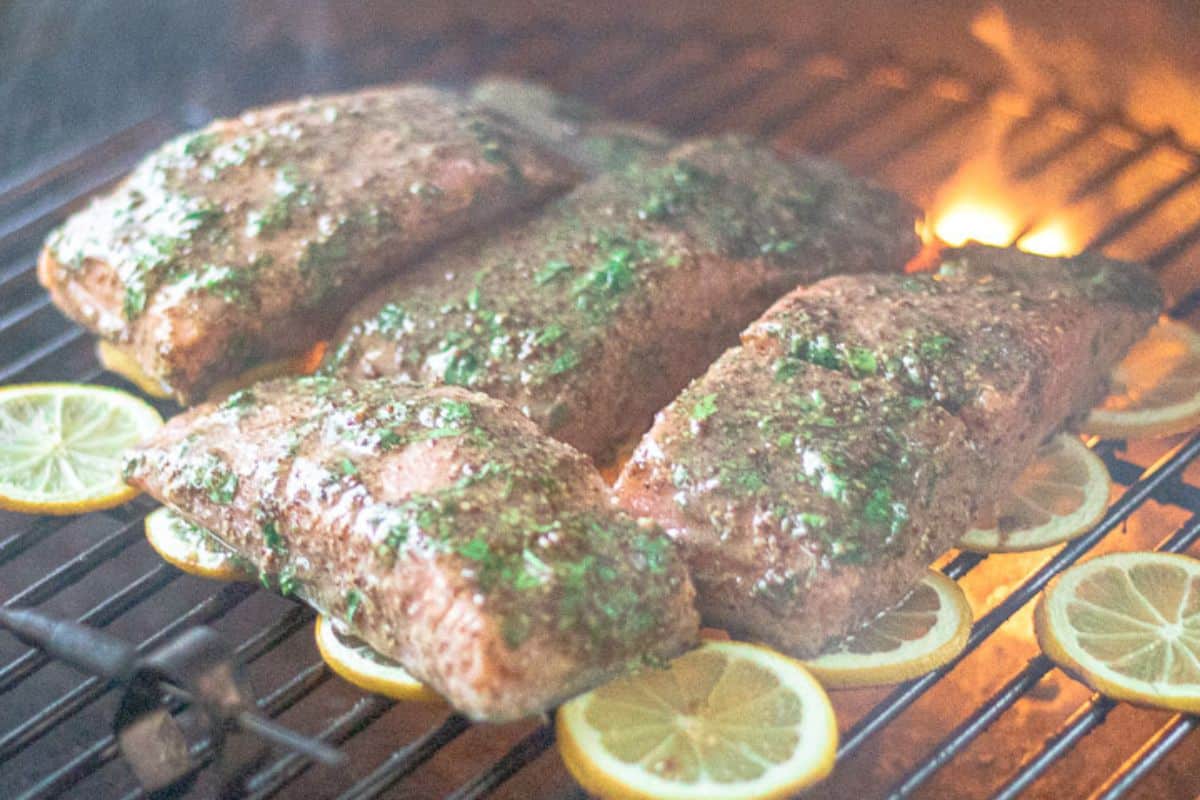
Sign up for my email notifications of new recipes and posts right HERE.
Hints and Tips (FAQs)
Cook the Salmon until it is just firm and the meat flakes easily when poked with a fork. The USDA recommends 145 degrees internal temperature, but I like it medium (135 to 140 degrees Fahrenheit). Use your fork or a knife to check the flakiness, but it's always a good idea to use an instant-read thermometer.
Regardless of how you like your Salmon cooked, take it out of the oven or off the grill about 5 degrees Fahrenheit below your target. Carryover heat will continue to cook the fish while it rests.
Here are the different levels of doneness using internal temperature:
Rare: Less than 120 degrees F.
Medium-Rare: 125 degrees F to 130 degrees F.
Medium: 135 degrees F to 140 degrees F.
Well-Done: 145 degrees F or more.
If not everyone likes their Salmon cooked the same, place the fillets that need to be more well done in the oven about 5 or 10 minutes before the others.
The USDA does not recommend rinsing uncooked Salmon fillets because of the potential to splash bacteria onto other surfaces. I get it. Although rinsing doesn’t kill the bacteria, it can eliminate that slightly slimy feeling the fillets can have. So, I rinse the fillets under very low running cold water held deep in the sink, or by dipping them in a bowl of cold water. I then pat them dry with paper towels before placing them in the marinade. While rinsing, I also run my hands all over the fillets to feel for bones. Cleaning and prepping the fill will not necessarily catch all of them. The best way to remove these bones is with tweezers. Determine which way the bones are running and use the tweezers to pull them out in the same direction. That way you will minimize any damage to the flesh that will look bad!
The cooked Salmon can be stored in the refrigerator for 3 to 4 days or in the freezer for 2 to 3 months. Wild-caught Salmon may last a little longer in the freezer than farm-raised due to the lower fat content, but the longer any of it stays frozen, the more it is likely to lose flavor. The key to storage is to make it airtight, so a vacuum sealer is perfect for freezing fish. Thaw it in the refrigerator for about 24 hours, then reheat it in a low oven (275 degrees) in a covered baking dish for about 15 minutes. Reheating too hot or too long will dry out the Salmon.
Leftover Salmon can be used without reheating by flaking it into a salad.
Leftover sauce can be kept in the refrigerator in an airtight container for 2 to 3 days. Reheat on the stovetop over low heat until warmed through. If the sauce separates while reheating, add a few drops of water and whisk until reconstituted.
That's a liquid protein called albumin which is present in all Salmon. It can look pretty gross, but it's safe to eat. You can minimize its appearance on the surface by not overcooking the salon. When it hits 140 degrees Fahrenheit, the albumin is more prevalent. Read this article for more information about that white stuff.
Salmon is recognized for its nutritional value. It contains nutrients, including minerals, vitamin D, and omega-3 fatty acids that lead to cardiovascular health, improved thyroid function, and even cognitive function. While all Salmon is considered good for you, there is some difference in the nutritional values between wild-caught and farm-raised Salmon. Check out Medical News Today's article on the nutritional benefits of Salmon in your diet. If you want to nerd out on Salmon, this article details the differences between farm-raised and wild-caught.
Redfish, Drum, Cod, and Chilean Sea Bass would also be great with this recipe. Salmon is higher in fat content than these fish, so you will want to adjust the cooking time based on that and the thickness of the fillets you are cooking.
Some folks don't like Cilantro, so substitute other fresh herbs: parsley, basil, dill, tarragon, or even curry powder.
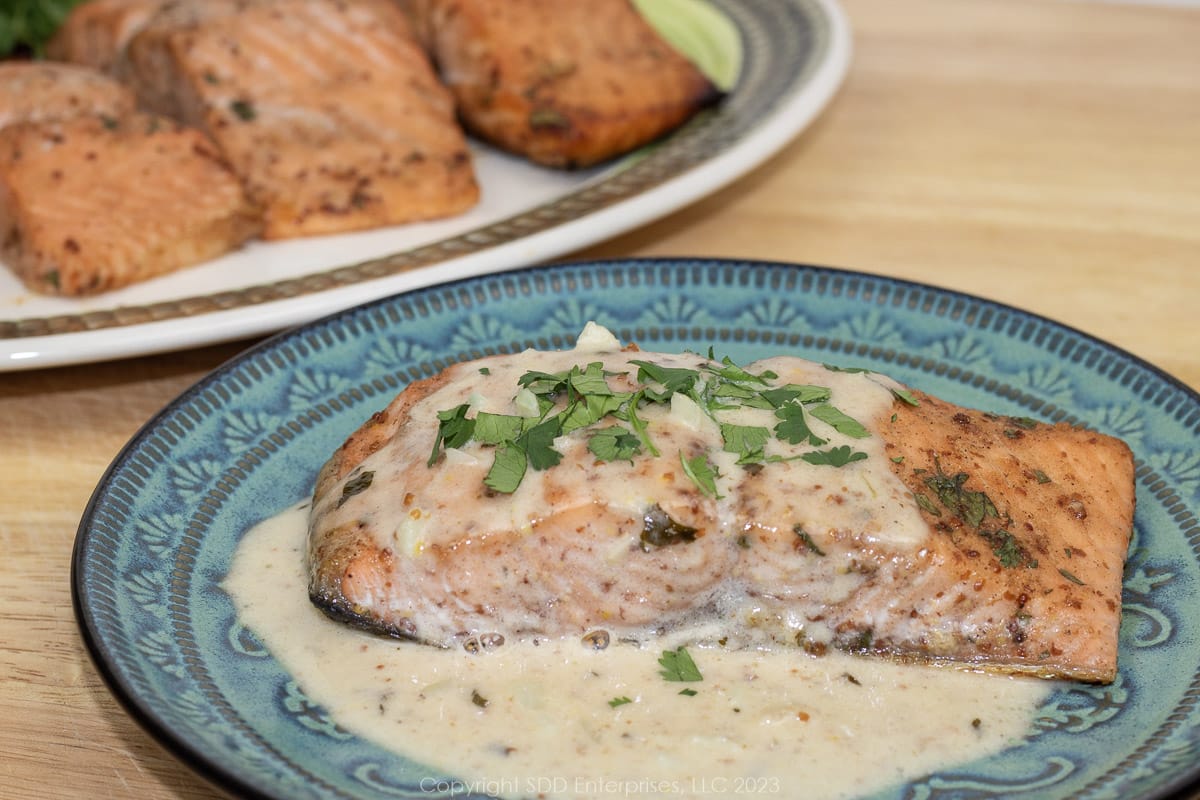
Here are other great Baked Salmon Recipes from Sweet Daddy D:
If you make this recipe:
- Tell us about it in the Comments section below
- LEAVE A RATING ON THE RECIPE-worthy of 5-Stars?
- Questions or Comments? that’s the place!
- SIGN UP FOR OUR EMAIL UPDATES so you don't miss anything!
- Post a picture and share it with your friends on our Social Media:
Yeah You Right!
Recipe
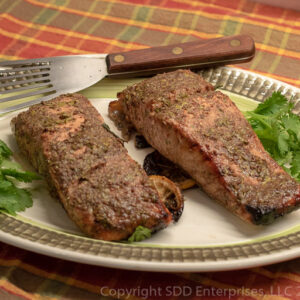
Baked Salmon with Cilantro Creole Mustard Cream Sauce
Here's What You Need
- 1 ½ pound Salmon Fillets
Marinade
- ¼ cup creole mustard
- 3 tablespoons honey
- 2 tablespoons cilantro chopped
- 1 teaspoons ground allspice
- ¼ teaspoon nutmeg
- 4 tablespoons Lemon Juice
- 1 teaspoon garlic finely chopped
- ¼ teaspoon kosher salt
- ¼ teaspoon white pepper
Sauce
- 8 tablespoons butter divided
- 2 tablespoons garlic minced
- ¼ cup Marinade
- 4 tablespoon Lemon Juice
- 1 cup heavy cream
Here's What You Do
- Mix all the marinade ingredients together in a bowl and set aside for about 30 minutes.
- Rinse salmon filets and remove any bones you find. Pat dry and slice crossways into about 4 equal size pieces.
- Place salmon fillets in the bowl and coat with the marinade. Place the bowl in the refrigerator for another 30 minutes.
- Wipe off most of the marinade from the salmon fillets and place them, skin side down, on an oven-safe baking dish and place in a 425-degree Fahrenheit preheated oven. Reserve the remaining marinade.
- Bake for 15 to 20 minutes or until the internal temperature reaches 135 degrees Fahrenheit (medium-rare) or your desired level of doneness. See Notes.
Prepare the Sauce
- While the fillets are baking in the oven, melt 4 tablespoons of butter in a saucepan.
- To the melted butter, whisk in ¼ cup of the reserved marinade and the lemon juice.
- Once the mixture begins to simmer, add the garlic and heavy cream and mix to combine.
- Return to a simmer for about 5 minutes, whisking or stirring constantly until the sauce starts to thicken.
- Remove the pan from the heat and add the remaining butter. Stir or whisk constantly until the butter has melted.
- Remove the fillets from the oven and allow them to rest for about 10 minutes.
- To serve, place each fillet on a serving dish and ladle sauce over each.
Recipe Notes
Nutrition Estimate
Publisher’s Note: This recipe and article were originally published as Cilantro Creole Mustard Marinated Salmon in March 2019. Like many of my original recipes, I continue to look for ways to improve them. I have revised this recipe to enhance the depth of flavor in the marinade and create a sauce that compliments the flavors developed in this recipe. With this updated recipe, I am also updating the article to update the process instructions, important technical updates, and improved images that make this article more search-friendly. Contact me if you would like a copy of the original recipe.

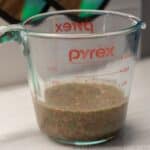

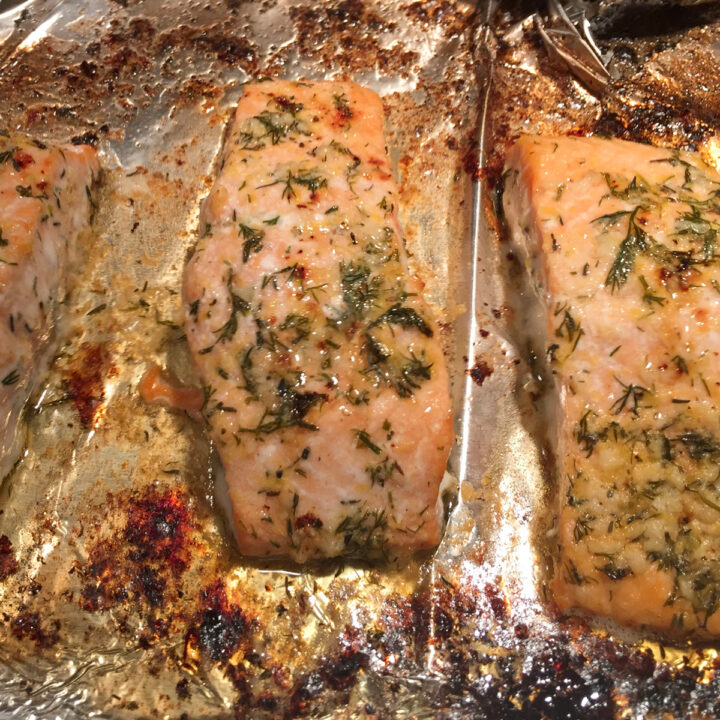
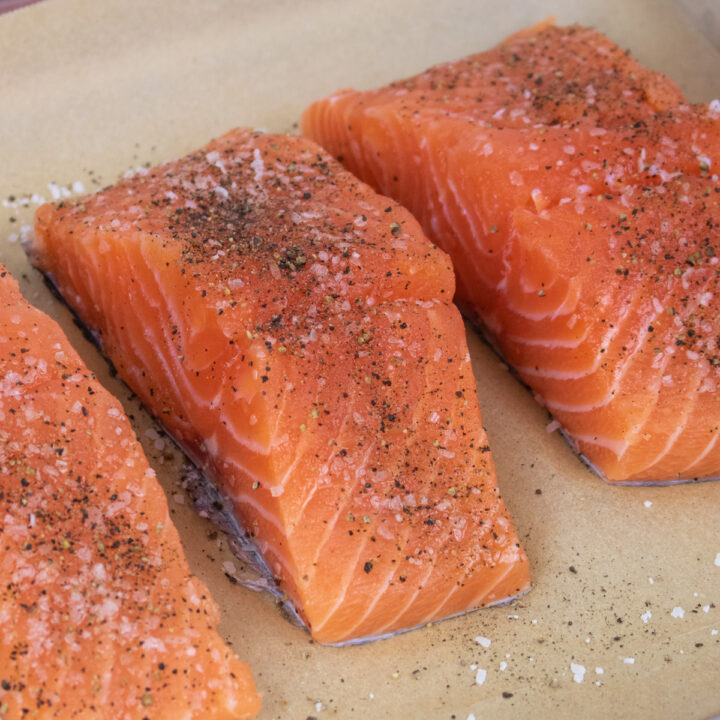
Mary Winnett
This sounds absolutely delicious! I love a new taste to go with salmon.
Sweet Daddy D
Thanks, Mary. It is pretty good, if I do say so myself. Let me know what you think when you try it.